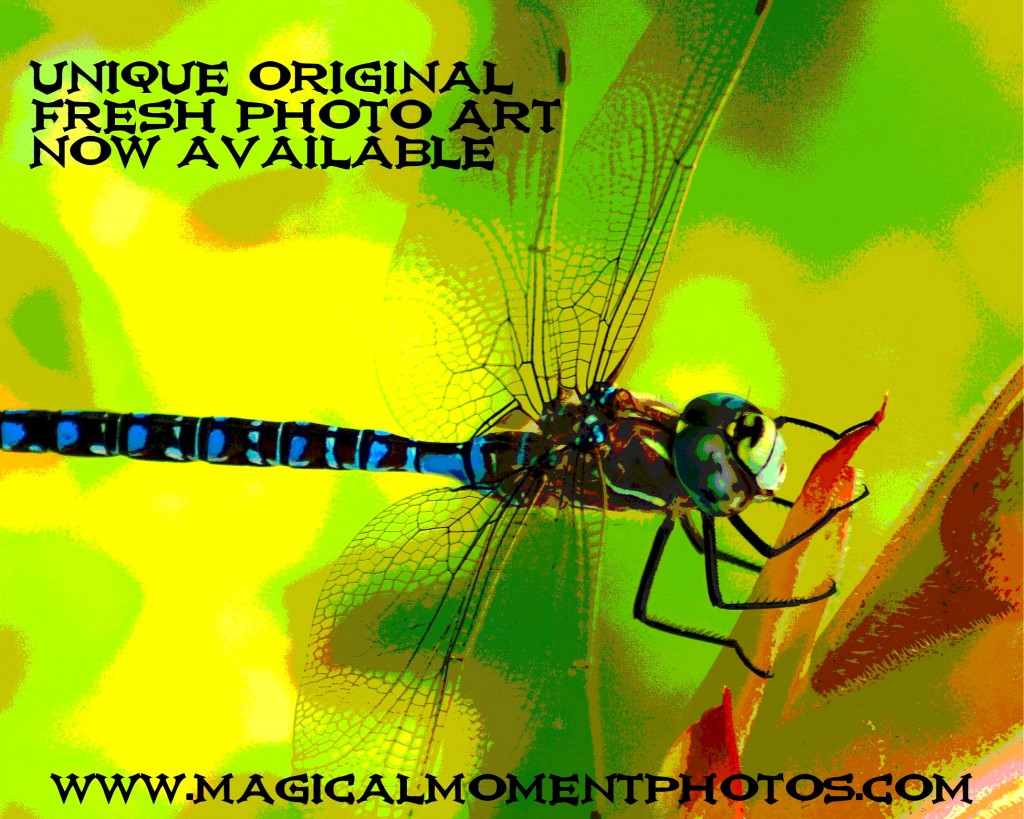DRAGONFLY PHOTOS AND ARTWORK

DRAGONFLY PHOTOS AND ARTWORK BY BEN UPHAM
CLICK ON THE LINKS BELOW TO SEE DRAGONFLY PHOTOS AND ARTWORK BY BEN UPHAM III:
DRAGONFLY PHOTOS & ARTWORK by BEN UPHAM III
and
THE STORY OF VINCE THE DRAGONFLY ON YOU-TUBE
and
MAHOGANY RUSH PERFORMING “DRAGONFLY” LIVE IN 1977
**********************************************************************************************************************************************
A Dragonfly is an insect belonging to the order Odonata, the suborder Epiprocta or, in the strict sense, the infraorder Anisoptera (from Greek ανισος anisos, “uneven” + πτερος pteros, “wings”, due the hindwings being broader than the forewing. It is characterized by large multifaceted eyes, two pairs of strong transparent wings, and an elongated body. Dragonflies can sometimes be mistaken for damselflies, which are morphologically similar, however adults can be differentiated by the fact that the wings of most dragonflies are held away from, and perpendicular to, the body when at rest. Dragonflies possess six legs (like any other insect), but most of them cannot walk well. Dragonflies are some of the fastest insects in the world.
Dragonflies are important predators that eat mosquitoes, and other small insects like flies, bees, ants, wasps, and very rarely butterflies. They are usually found around marshes, lakes, ponds, streams, and wetlands because their larvae, known as “nymphs”, are aquatic. Some 5680 different species of dragonflies are known in the world today.
Though dragonflies are predators, they themselves are subject to predation by birds, lizards, frogs, spiders, fish, water bugs, and even other large dragonflies.
Female dragonflies lay eggs in or near water, often on floating or emergent plants. When laying eggs, some species will submerge themselves completely in order to lay their eggs on a good surface. The eggs then hatch into nymphs. Most of a dragonfly’s life is spent in the nymph form, beneath the water’s surface, using extendable jaws to catch other invertebrates (often mosquito larvae) or even vertebrates such as tadpoles and fish. They breathe through gills in their rectum, and can rapidly propel themselves by suddenly expelling water through the anus. Some nymphs even hunt on land, an aptitude which could easily have been more common in ancient times when terrestrial predators were clumsier.
The larval stage of large dragonflies may last as long as five years. In smaller species, this stage may last between two months and three years. When the larva is ready to metamorphose into an adult, it climbs up a reed or other emergent plant. Exposure to air causes the larva to begin breathing. The skin splits at a weak spot behind the head and the adult dragonfly crawls out of its old larval skin, pumps up its wings, and flies off to feed on midges and flies. In flight the adult dragonfly can propel itself in six directions; upward, downward, forward, back, and side to side. The adult stage of larger species of dragonfly can last as long as five or six months.
********************************************************************************************************************************************
CLICK ON THE LINKS BELOW TO SEE DRAGONFLY PHOTOS AND ARTWORK BY BEN UPHAM III:
DRAGONFLY PHOTOS & ARTWORK by BEN UPHAM III
and
THE STORY OF VINCE THE DRAGONFLY ON YOU-TUBE
and
MAHOGANY RUSH PERFORMING “DRAGONFLY” LIVE IN 1977